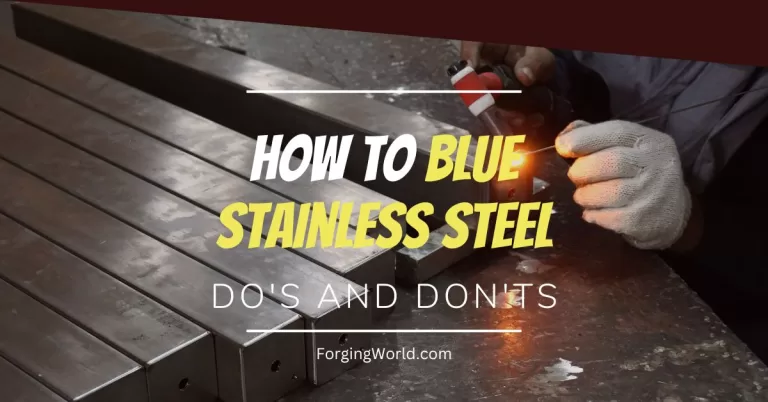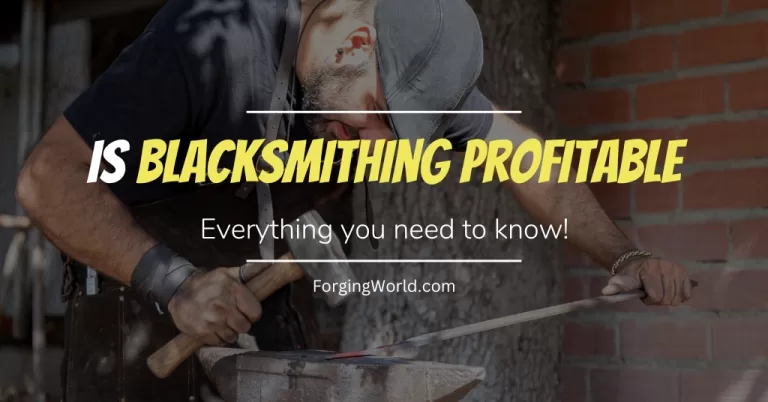If you’re a blacksmith or knife maker looking to dampen the noise produced by your anvil, foam insulation is a fantastic solution. It effectively absorbs and disperses vibrations created by hammer strikes, reducing the overall noise level.
In this guide, we’ll walk you through the process of installing open-cell or closed-cell foam insulation to dampen anvil sounds and create a quieter workspace.
Open-Cell vs. Closed-Cell Foam Insulation: Which One Is Right for You?
Before diving into the installation process, it’s essential to understand the key differences between open-cell and closed-cell foam insulation and choose the right one for your needs:
Open-cell foam insulation: This lightweight and porous foam effectively absorbs high-frequency sounds. It is generally less expensive and easier to cut and install than closed-cell foam.
Closed-cell foam insulation: This dense and rigid foam is an excellent sound barrier for low-frequency noises. It has a higher cost than open-cell foam but offers better thermal insulation.
Consider the frequency of the noise you want to dampen, your budget, and the additional benefits each foam type offers when choosing the right foam insulation for your anvil.
Measuring Your Anvil: Getting the Perfect Fit
To ensure the foam insulation effectively dampens the noise, it’s crucial to cut the foam to the right size.
Start by measuring the dimensions of your anvil’s base, which will help you determine the size of foam insulation needed.
Don’t forget to add a small allowance to ensure a snug fit under the anvil.
Cutting the Foam: Precision Matters for Optimal Soundproofing
Accurately cutting your foam insulation is essential for achieving the best soundproofing results.
In this section, we’ll break down the process into easy-to-follow steps and provide tips for getting a clean and precise cut, ensuring that your foam insulation fits perfectly under your anvil.
Gather the Necessary Tools
Before starting, make sure you have the following tools at hand:
- Sharp utility knife or foam-cutting tool
- Straight edge (metal ruler or T-square)
- Marker
- Cutting mat (optional)
Prepare Your Workspace
Choose a clean, flat surface for cutting the foam, preferably one that’s large enough to accommodate the entire piece of insulation.
If you have a cutting mat, place it on the surface to protect the area and ensure cleaner cuts.
Mark the Measurements
Using your anvil’s measurements as a guide, mark the dimensions on the foam insulation. Remember to add a small allowance to ensure a snug fit under the anvil.
Use the marker and straight edge to draw straight lines along the measurements, ensuring they’re easy to see and follow.
Cut the Foam
Follow these steps to achieve a clean and accurate cut:
- Place the foam on your prepared surface, with the marked lines facing up.
- Align the straight edge along one of the marked lines, applying pressure to hold the foam in place.
- Use a sharp utility knife or foam cutting tool to carefully cut the foam along the marked line, using the straight edge as a guide. Make several shallow passes instead of one deep cut for a cleaner result.
- Repeat the process for each marked line until the foam is cut to size.
Cutting Additional Layers (Optional)
If you plan to add a second layer of foam between your anvil and anvil stand for extra sound dampening, follow the same process to cut another piece of foam insulation.
You may need to adjust the measurements to fit the stand’s dimensions.
With the foam accurately cut, you’re ready to move on to the installation process.
Precise cutting ensures that your foam insulation fits snugly under your anvil, providing optimal soundproofing and reducing the noise generated during your forging projects.
Installing the Foam: Layer by Layer
With the foam cut to size, it’s time to install it under your anvil.
If you’re using two layers, place the first layer on the anvil stand, followed by the anvil, and then place the second layer beneath the anvil.
Ensure that the foam covers the entire base of the anvil for maximum effectiveness.
Securing the Foam: Stability Is Key
To prevent the foam from shifting during use and maintain the stability of your anvil, consider securing the foam to the anvil stand or your workspace floor.
You can use adhesive or double-sided tape for this purpose. This will also help the foam insulation to stay in place, ensuring effective sound dampening.
Testing the Sound Reduction: Striking Results
Now that your foam insulation is installed, it’s time to test its effectiveness.
Strike your anvil with a hammer and listen to the noise reduction. If needed, make adjustments to the foam placement, secure it more firmly, or add additional layers to achieve the desired level of sound dampening.
Foam Insulation Maintenance: Ensuring Longevity
To keep your foam insulation performing at its best, it’s essential to maintain it regularly.
Inspect the foam for signs of wear, damage, or moisture buildup, especially if you’re using open-cell foam.
Replace the foam as needed to maintain effective sound dampening and protect your anvil and workspace.
Frequently Asked Questions
Absolutely! Combining foam insulation with other noise reduction techniques like rubber mats, chains, or magnets can further enhance the sound dampening in your workshop. You can find more information on using foam insulation in our detailed guide.
Look for a thick, heavy-duty rubber mat designed for industrial use. These mats typically provide better vibration absorption and noise reduction properties than thinner, lighter mats.
Regularly inspect your anvil and hammer for signs of wear or damage. Smooth out any rough or uneven surfaces using a file or grinder. Keeping your striking surfaces clean and well-maintained will help reduce noise.
Yes, you can use multiple magnets to help dampen vibrations and reduce noise. Experiment with different magnet placements to find the most effective configuration for your specific anvil.
A securely mounted anvil should not move or wobble during use. Check that your anvil is firmly attached to its stand or workbench, and tighten any bolts or fasteners as needed. You can also refer to our guide on properly mounting an anvil for more information.
Some anvil designs, such as those with a wider waist or made from materials like cast iron, may produce less noise than others. Additionally, anvils with a hardened steel top plate may also help to reduce noise. Experimenting with different anvil designs and materials can help you find the best option for your noise reduction needs.
Final Thoughts
In conclusion, foam insulation is a practical and effective solution for dampening anvil sounds in your blacksmithing or knife-making workshop.
By choosing the right type of foam, accurately measuring and cutting it, properly installing and securing it, and maintaining it, you can create a more peaceful and productive workspace for yourself and those around you.
With the noise under control, you’ll be able to focus on honing your craft and forging masterpieces without disturbing your surroundings.


